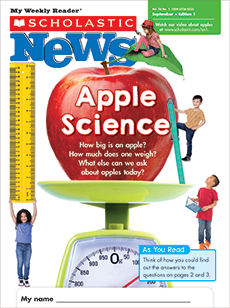A guide for using our resources
Children will discover the characteristics of baby alligators.
Vocabulary: egg tooth, webbed feet, hatchlings
Science Focus: baby and adult animals
CCSS and Similar State Standards: RI.1.1 ask and answer questions; RI.1.4 determine meaning of words; RI.1.10 read informational texts; RF.1.2 vowels; W.1.8 gather information; SL.1.1 participate in collaborative conversations
Simple, spectacular ideas to boost your lessons.
Paired Text Suggestion: Alligator Baby by Robert Munsch
Paired Text Suggestion: Alligator Baby by Robert Munsch
- This very silly story follows a family missing their new human baby and meeting a lot of baby animals—and their angry parents—from the zoo. Luckily, the big sister is able to save the day!
Digraph Hunt: th-
Digraph Hunt: th-
- Break up students into four groups. Assign each group a colored box in the issue. Have each group hunt for words that begin with th-.
- Which group found the most words?
Hands-On Activity: Draw a Life-Sized Gator!
Hands-On Activity: Draw a Life-Sized Gator!
Skills: measurement, labeling
Materials: Gator Labels template, measuring tape, scissors, sidewalk chalk or butcher paper and crayons
- Students can draw and label a life-sized American alligator on the playground, sidewalk, or in the classroom! An adult male alligator can grow to be 15 feet long from its snout to the end of its tail. The tail is about 7.5 feet long.
- Review the words found on the Gator Labels template sheet. Then use a measuring tape to draw a 15-foot line, and make a mark right in the middle to show where the tail should start. Using the line as a guide, have children work together to draw the rest of the alligator body!
- As students are working or as they finish drawing, have them cut out and place the labels onto their alligator body!
